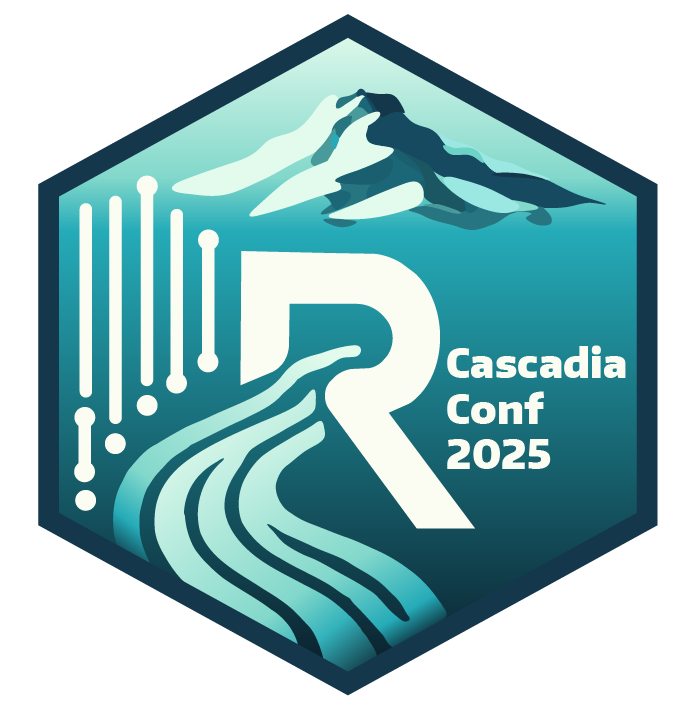Logistics
Where do I upload my slides?
Please refer to the link sent to you via email. If you do not have this link, please contact cascadiarcon@gmail.com.
There is an error in my title/abstract/bio/photo on the CascadiaR website. How do I fix this?
Open an issue on our GitHub and we will resolve the issue asap.
What if I can no longer present in person?
Please contact cascasiarcon@gmail.com as soon as possible, and we will work to transition you to a virtual talk format is possible.
Presentation guidelines
Prior to the conf
- Please upload your presentation by end of day June 20.
- We request that you upload both the original format and a PDF just in case technical issues arise.
- If you have a live demo or other presentation that you must present directly from your computer, please see an organizer during registration or the break prior to your session to verify setup.
Making inclusive and accessible slides
- Use clear, easy to read fonts like Arial, Calibri, or Verdana. Make sure the font size is large enough (at least 18pt for main body text).
- Use color with restraint. Consider accessible palettes such as those at https://davidmathlogic.com/colorblind/ and preview what your R plots look like using the package colorblindr
- Use slide titles and headings to provide a clear structure for your presentation. Using the provided structures PowerPoint, Google Slides, Keynote, etc makes it easier for people with screen readers to navigate through your content.
- Use consistent templates and layouts so the attendee can easily follow along. This includes using the same font and color scheme, as well as a consistent placement of images and text.
- Avoid using animations and transitions. While animations and transitions may look cool, they can be disorienting for people with certain disabilities, such as vestibular disorders. If you do use them, keep them simple and use them sparingly.
Giving an inclusive and accessible talk
- Use simple language and avoid jargon. Use clear, concise language, and avoid technical jargon that may be difficult for some people to understand. When jargon or technical language is used, offer a definition in plain language.
- Avoid phrases like “as we all know”. We have a very diverse audience so assume limited prior knowledge if your field.
- Use inclusive language such as non-gendered group terms like everyone, y’all, etc.
- Repeat or summarise questions before answering. This is especially important for our hybrid conference format.
